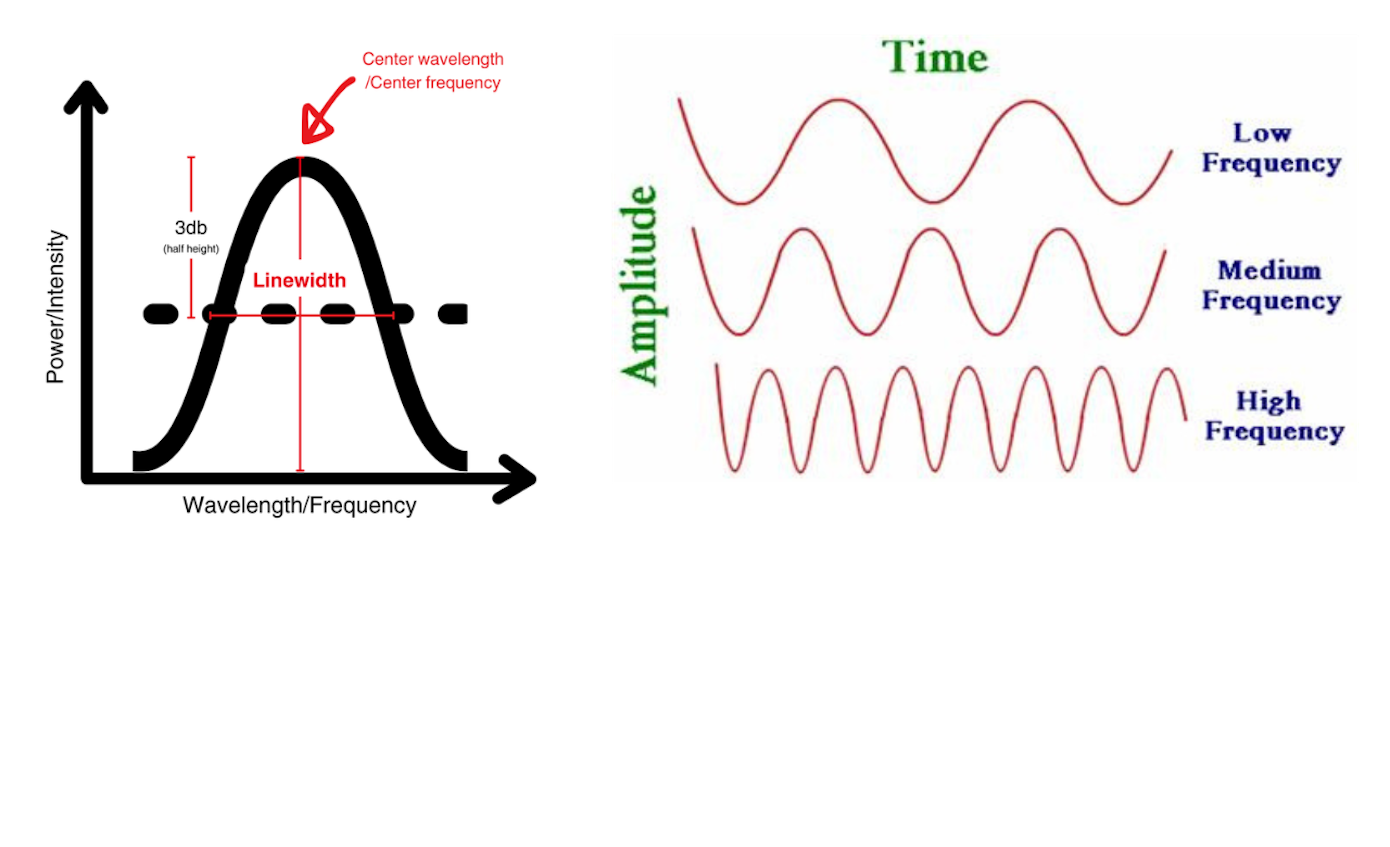Fiber optics communication. The wavelength of light used in fiber optics affects the transmission properties and the design of the fiber. Designing and using lasers. Lasers are designed for specific wavelengths, and understanding the relationship between frequency and wavelength is important for creating the desired light properties.
Wavelength to Frequency
First enter either the Wavelength or equivalently the Frequency. Then enter any of the parameters and the others will be calculated in real-time.
Wavelength to Frequency
Center wavelength (nm) to center frequency (tHZ) (with unit change)

Wavelength to frequency Formula
Optical bandwidth is typically expressed in either frequency or wavelength intervals. The conversion between the two is non-intuitive. If we assume a reasonably small wavelength interval we can convert to a frequency interval via \[\Delta\nu = {c \over {\lambda^2}} \Delta\lambda \] where \(\lambda\) is the center wavelength and \(\Delta\lambda\) is the wavelength bandwidth.
Linewidth to coherence length formula
Coherence length can be calculated as \[L_{coherence} ={c \over \pi\Delta\nu}\] where \(\Delta\nu \) is the linewidth (in meters). The coherence length of a laser is a measure of the spatial or temporal extent over which the electromagnetic waves emitted by the laser maintain a constant phase relationship. In simpler terms, it describes how "organized" or "ordered" the waves are.
Common Use Cases
• Designing musical instruments and sound systems. The frequency and wavelength of sound waves determine how they interact with different materials and environments.
• Room acoustics and noise control. Understanding how sound waves of different frequencies behave can help in designing spaces with better acoustics.
Observing astronomical objects. Different frequencies (or wavelengths) of radio waves can reveal different information about celestial objects, such as stars, galaxies, and other phenomena.
Determining the appropriate antenna length for a given frequency. The wavelength determines the size of the antenna needed to efficiently transmit or receive signals.
• Frequency allocation and spectrum management. Different services (like radio, television, and mobile networks) operate at different frequency bands, and understanding their wavelengths helps in planning and avoiding interference.
• Ultrasound imaging. Different frequencies of ultrasound waves penetrate tissues to varying degrees, providing different types of diagnostic information.
• Radiation therapy. The frequency and wavelength of electromagnetic waves used in radiation therapy are carefully controlled to target specific areas in the body.
• Detecting and imaging objects. Radar and sonar systems use the relationship between frequency and wavelength to determine the distance and characteristics of objects.
• Weather forecasting. Radar systems use specific wavelengths to detect precipitation and other atmospheric phenomena.
